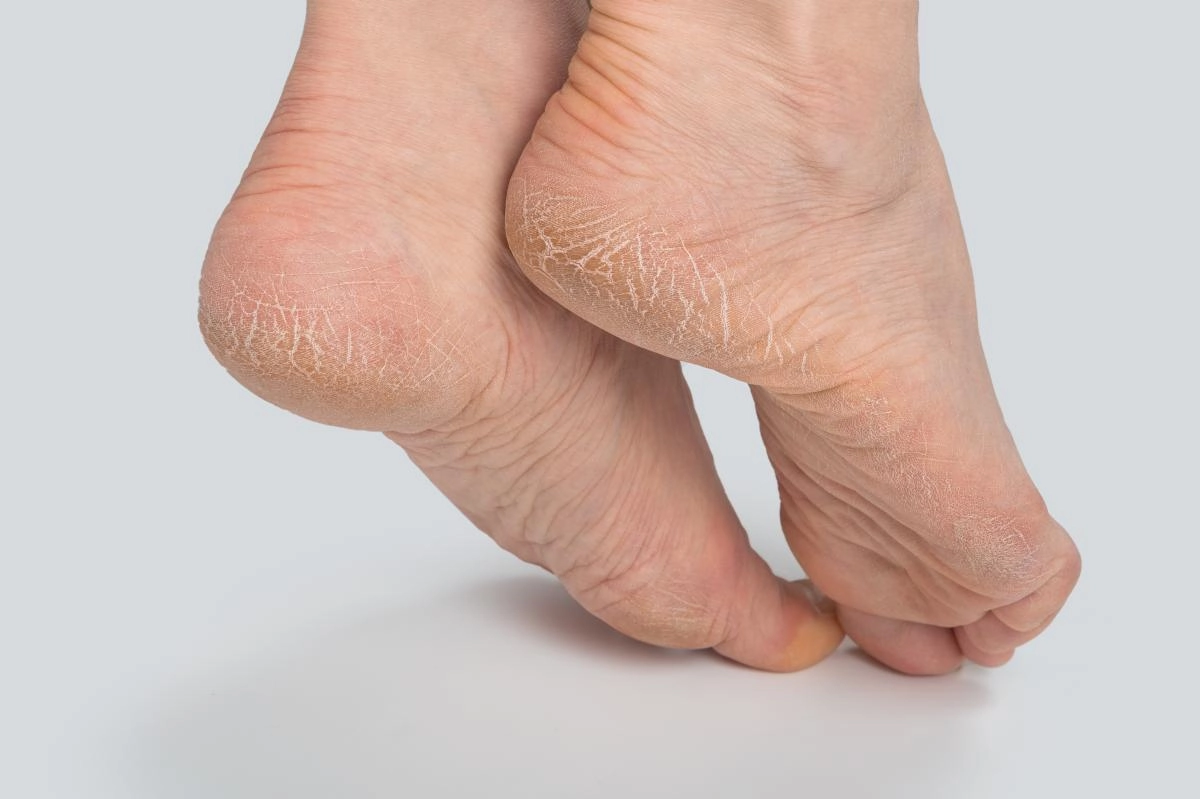An expert told about how to avoid cracked heels and why they appear

Photo source: 123rf.com
Why do cracks appear on the heels and how to properly care for them?
Rough, cracked skin on the heels is not only unaesthetic and painful, but even dangerous, because an infection can enter the body through damage. What should you do to keep your heels soft and well-groomed? Why do heels crack? Ekaterina Slavnova, a podiatrist at the CIDK clinic network and ambassador of the FILLLIN.RU aesthetic medicine clinic booking platform, answered these questions.
"A huge responsibility falls on the feet - they help us move and experience serious loads. Age-related changes, corns and calluses, lack of vitamins, lack of water in the body, hormonal imbalances, and even banal improper care are factors that cause dry skin on the heels. Therefore, in order to maintain the softness of the feet and heels - you will have to make an effort and act in a comprehensive manner," comments a specialist of the CIDK clinic network, ambassador of the FILLLIN.RU platform for booking aesthetic medicine clinics.
Why do heels "dry out" and crack?
In fact, there are plenty of reasons. The problem may be tight shoes. They squeeze the feet, worsening blood circulation in them, the skin suffers from insufficient nutrition.
Shoes that are not the right size rub, calluses appear, the skin thickens. Also, with a lack of vitamins in the diet, especially vitamin A and protein, the epidermis loses its elasticity and is quickly damaged.
The amount of water in the body is also important. There are not so many sweat glands on the heels themselves, so if you drink little water, the cells will begin to suffer from "thirst", and the skin will dry out and crack.
The cause of cracked heels can also be hidden in the development of a fungal infection on the feet. Diseases such as psoriasis and ichthyosis also manifest themselves as problems with the feet. Fasting, smoking, gastrointestinal diseases, hormonal imbalances, frequent exfoliation, temperature changes, swimming in chlorinated water - this is far from a complete list of reasons why the skin on the heels dries and cracks.
Photo source: 123rf.com
What will help to cope with dryness?
The approach should be comprehensive. First of all, it is necessary to establish the exact reason why the skin becomes dry. If there is a fungus on the feet, it will be difficult to get rid of the problem without eliminating the factors that provoke skin damage. A podiatrist will conduct the necessary tests and prescribe effective therapy. You may need to consult other specialists.
At home, it is important to pay a lot of attention to hygiene and skin hydration. Feet should be washed regularly, dried well with a towel and apply a nourishing cream to the heels to soften them.
Once a week after steaming, you can remove the skin from the heels using special scrubs. But it is not recommended to use a knife or razor to remove excess skin, since infection gets into the wounds. You should also avoid using pumice. Firstly, it is difficult for a non-professional to properly treat the heels so that the problem does not worsen, and secondly, brushes and pumice should be disposable, otherwise there is a risk of inflammation.
Compresses and masks with anti-inflammatory and healing effects are good for healing cracks.
It is recommended to visit a professional medical pedicure procedure at least once a month. During the consultation, the doctor will take material for microscopic examination if necessary, and then, after disinfection, remove excess skin. Then a keratolytic is applied, the heels are treated with a pedicure machine. Finally, a moisturizing care product is applied to the skin.
Peeling with acids has proven its effectiveness. They gently dissolve excess skin and do not leave behind damage through which harmful microorganisms can enter the body. It is recommended to entrust the procedure to professionals, since the use of special socks with acids of dubious quality at home can harm the skin, which will then have to be restored for a long time.
For healthy feet, it is recommended to walk barefoot more often on grass, sea pebbles, pour cold water on your feet, and also regularly massage your feet. But if there are cracks on your heels, then it is better to refuse to walk barefoot so that fungal spores and various microorganisms do not penetrate the wounds.
If you pay due attention to your feet and take proper care of them, the skin on your heels will always be smooth and elastic.